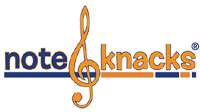![MB900422287[1]](http://noteknacks.com/wp-content/uploads/2014/10/MB9004222871-150x150.jpg) Different school models fascinate me, regardless of my opinion of its effectiveness. No matter the set up, we as educators can learn from them. This morning I read about a “democratic school” out in Maryland called The Fairhaven School. This school and schools like it, are designed to create the freedom for students to explore their interests and allow them the time to dive deep into what they want to learn. There seems to be very little structure.
Different school models fascinate me, regardless of my opinion of its effectiveness. No matter the set up, we as educators can learn from them. This morning I read about a “democratic school” out in Maryland called The Fairhaven School. This school and schools like it, are designed to create the freedom for students to explore their interests and allow them the time to dive deep into what they want to learn. There seems to be very little structure.
If you have read my blogs in the past, you know I am a big believer in time for exploration; students learn best when given time to tinker with the materials in their world. A “democratic” school takes this concept to a whole new level. They state that they have trust in their students to take charge of their own learning. There absolutely is value in this; however, there is also a need for balance. In one of the videos from another school like this, a student spoke about spending his first year playing video games all day every day, his next year in the art room and the third year pursuing his cognitive science interests.
Whether you agree with this or not, it poses an interesting question: How much do we trust our students? Do we trust them enough to know what they want to learn and how long to study it for? It certainly challenges the current climate of “not only do we not trust our students, we don’t trust our teachers, as well!”. Here we have 2 sides of the spectrum: total trust and none at all. Again, where is the balance?
I would imagine most of us fall somewhere in the middle. We should trust our students (and us!!) more, but we also need educators teaching children concepts that may not initially interest them, but will prove to be beneficial later on. There are so many wonderful experiences that occur in a school environment, that I find a democratic school as limiting as a traditional one.
So where does this leave us? Most of us only have control over what happens in our classrooms….most of the time. A lot of us are doing great things already. We put our students in small groups to explore materials (Note Knacks, for example ), we promote a learning environment where children feel free to share their thoughts and we encourage improvisation as much as possible. It is in these experiences that students open up and contribute meaningfully to the class. As far as how far to push this, it is up to you. I have tried to ask kids what they want to study and I often get a big “I don’t know!”. Perhaps the direct approach isn’t the best way to handle it. After all, no one has ever asked them this before….I would imagine. So I have learned to present a few ideas and activities and see where the kids take me. When a great idea presents itself, I drop my agenda and encourage the students to explore it, but weave the concepts for the day into it. This way, everyone wins.
Have you ever had your students plan your lessons? Write below to let us know!
